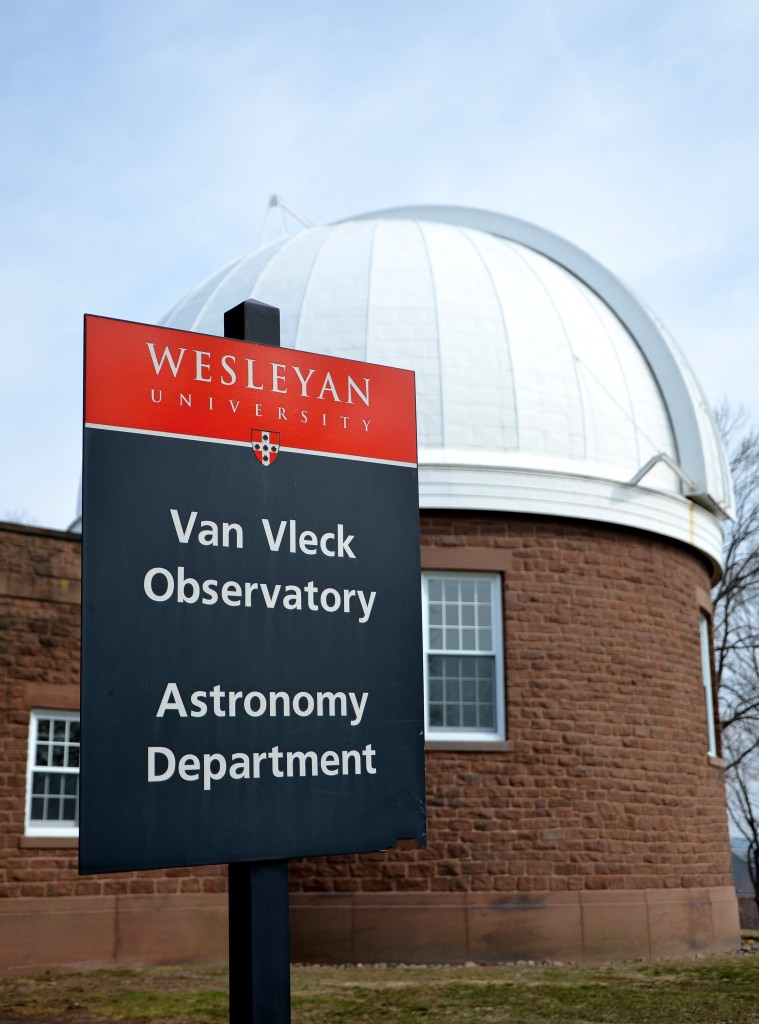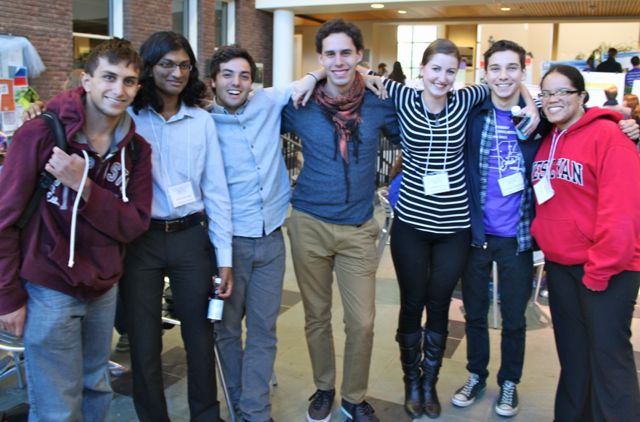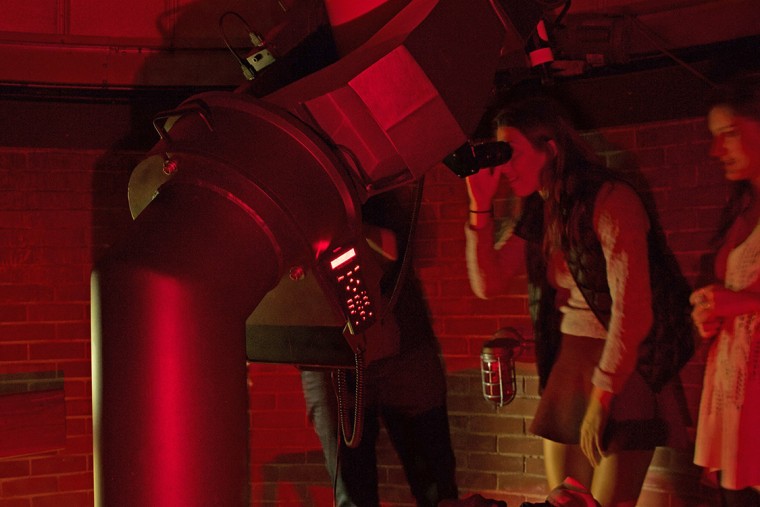Wesleyan's Van Vleck Observatory is celebrating its centennial this spring, with a series of events and an exhibition beginning in early May. On May 6, the observatory's library will reopen to the public with an exhibition on the history of astronomy at Van Vleck. Developed by a team of faculty, students, and staff, the exhibition will use the observatory's extensive collection of scientific instruments, teaching materials, photographs, drawings, and correspondence to illustrate both the changes in astronomical research and teaching over the past century, and the observatory's consistent mission of conducting instruction and research under the same roof. The exhibition will…
The 26th Annual Undergraduate Research Symposium of the Keck Northeast Astronomy Consortium (KNAC) was held at Williams College on Oct. 17. Five students presented results of their summer research: Julian Dann '17, Aylin Garcia Soto '18, and Girish Duvvuri '17 delivered oral presentations while Rachel Aronow '17 and Avi Stein '17 presented a poster. Several other students came along to enjoy the weekend, which featured a dinner and social event on Friday night, the seminar on Saturday and breakout sessions on such topics as Inclusive Astronomy and how/why to program in Python. More than 100 students and faculty from KNAC attended the event (pictured…
Wesleyan's Women in Science (WIS) gathered at the Van Vleck Observatory on Oct. 8 for "Starry Night," an evening of stargazing, conversation and hot chocolate. Participants used the Astronomy Department's 16-inch Fiducia telescope to view the night sky. (Photos by Ryan Heffernan '16) (more…)
Astronomy magazine has an in-depth feature in its October issue on Wesleyan's astronomical history and the restoration of its century-old, 20-inch refractor telescope, just in time for the Van Vleck Observatory's centennial observation this spring. Telescopes like Wesleyan's 28-foot-long, two-ton refractor had once been cutting edge, and a source of pride for dozens of American universities. But as they "staggered into obsolescence" over the past half century, institutions have had to make tough choices about whether to renovate or retire them. In 2014, Wesleyan hired Chris Ray and Fred Orthlieb of Pennsylvania to give its refractor a second life. The story traces the history…
Astronomers at Wesleyan have detected shock waves produced by a high-speed "hot Jupiter" exoplanet caught in a tight orbit around its host star, io9 reported. The story explains: It’s a potential indication of an incredibly powerful magnetic field around the planet. Also known as “roaster planets,” hot Jupiters are so named because they have many characteristics in common with the largest gas giant in our solar system, most notably mass. But they have much hotter surface temperatures because they orbit much closer to their parent stars. Researcher in Astronomy Wilson Cauley has published a new study on the topic in the Astrophysical Journal. io9 quotes Cauley's…




